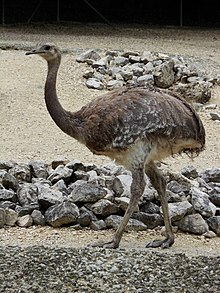By Charles Lane, Published: April 25
 For three days, we had roamed Chile’s Lauca National Park searching for wildlife, and our efforts had been abundantly rewarded with sightings of soaring condors, graceful vicuñas and cute chinchillas.
For three days, we had roamed Chile’s Lauca National Park searching for wildlife, and our efforts had been abundantly rewarded with sightings of soaring condors, graceful vicuñas and cute chinchillas.
Even so, I felt disappointed as I stood at the foot of Guallatiri Volcano, just outside the park boundaries, and watched puffs of cottony smoke rise from its snow-covered peak.
Our South American safari was almost over, and I hadn’t glimpsed the creature at the top of my must-see list: a rare flightless bird known in the indigenous Aymara tongue as the suri, and in modern ornithological parlance as Darwin’s rhea.
The latter appellation memorializes the great naturalist who identified — and ate — one of the ostrichlike beasts during his second voyage aboard the HMS Beagle. Only a few hundred remain in the wilds of northern Chile, although that’s not Charles Darwin’s fault. Subsequent generations of hunters reduced the suri’s numbers; farmers and miners encroached on its habitat.
No comments:
Post a Comment